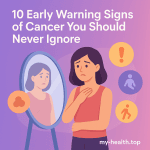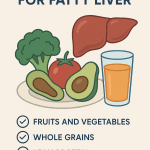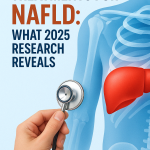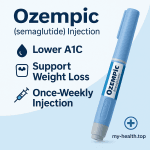The food choices we make have never mattered more—not just for our bodies, but for the planet and its future. In recent years, the vegan diet has emerged from the fringes and entered the mainstream, celebrated for its potential to boost health, combat chronic disease, promote ethical living, and reduce environmental harm.
More than just a trend, the vegan lifestyle represents a profound shift in how we view food, animals, and our responsibility as global citizens. But choosing to go vegan isn’t just about skipping meat or dairy—it’s about learning to nourish your body with plants in a balanced, sustainable way.
Whether you’re considering a plant-based transition, seeking health improvements, or already vegan and wanting to refine your approach, this in-depth guide offers everything you need to know about the vegan diet, from the science-backed benefits to practical meal plans and nutritional guidance.
What Is a Vegan Diet?
A vegan diet is a way of eating that excludes all animal products. This includes:
- Meat (beef, poultry, pork, lamb)
- Fish and seafood
- Dairy (milk, cheese, yogurt, butter)
- Eggs
- Honey and animal-derived additives (like gelatin or rennet)
Instead, it focuses on whole, plant-based foods such as:
- Fruits and vegetables
- Legumes (beans, lentils, chickpeas)
- Whole grains (brown rice, quinoa, oats)
- Nuts and seeds
- Plant-based oils (olive oil, avocado oil, flaxseed oil)
Beyond food, veganism often extends into lifestyle choices—eschewing leather, wool, and animal-tested products—but in this article, we focus specifically on the dietary aspects.
Why Do People Go Vegan?
People adopt a vegan diet for various reasons, including:
Health
Scientific studies show that a well-planned vegan diet may:
- Lower the risk of heart disease
- Help manage or reverse type 2 diabetes
- Reduce blood pressure and cholesterol
- Support healthy weight loss
- Lower cancer risk
- Improve gut health and digestion
Ethics
Many go vegan to oppose animal cruelty and industrial farming practices. Veganism aligns with the belief that animals are sentient beings who deserve compassion and respect.
Environment
Animal agriculture is a leading cause of greenhouse gas emissions, deforestation, water pollution, and habitat destruction. A vegan diet reduces your ecological footprint dramatically.
The Science-Backed Benefits of a Vegan Diet
Heart Health
Plant-based diets are naturally low in saturated fat and cholesterol, and high in fiber, which improves arterial function and reduces the risk of heart attacks and strokes.
Studies show vegans have:
- Lower LDL (bad cholesterol)
- Lower blood pressure
- Lower rates of hypertension and atherosclerosis
Type 2 Diabetes and Blood Sugar Control
A vegan diet, rich in fiber and low-glycemic foods, can improve insulin sensitivity and help regulate blood sugar levels.
In fact, some patients with type 2 diabetes have reversed their condition through a low-fat, whole-food vegan plan under medical supervision.
Weight Loss and Maintenance
Vegans typically have lower body mass indexes (BMIs) than non-vegans. This is due to:
- Lower calorie density of plant foods
- Higher fiber intake (which promotes satiety)
- Reduced intake of processed fats and animal proteins
Unlike crash diets, the vegan diet encourages long-term, sustainable weight loss without counting calories.
Cancer Prevention
A vegan diet rich in vegetables, fruits, legumes, and phytonutrients may reduce the risk of certain cancers, including:
- Colon cancer
- Breast cancer
- Prostate cancer
Antioxidants, fiber, and plant compounds help protect cells from oxidative stress and inflammation.
Gut Health and Digestion
Fiber is the key to digestive wellness—and only plants contain fiber. A high-fiber vegan diet:
- Promotes regularity
- Supports a diverse microbiome
- Reduces inflammation
- Protects against colorectal disorders
Energy, Skin, and Overall Vitality
Many new vegans report improved:
- Energy levels
- Skin clarity
- Mental focus
- Sleep quality
This is often due to the elimination of processed foods and increased intake of whole, nutrient-rich ingredients.
What Can You Eat on a Vegan Diet?
A healthy vegan plate is colorful, diverse, and satisfying. Here’s what to include:
Fruits
Berries, bananas, apples, mangoes, oranges, grapes, kiwis, melons, and more. These provide vitamins, antioxidants, and natural sweetness.
Vegetables
Leafy greens, cruciferous veggies, root vegetables, peppers, zucchini, mushrooms, and more. These are nutrient powerhouses.
Legumes
Beans, lentils, chickpeas, black-eyed peas, and soy products (like tofu, tempeh, and edamame) are excellent protein sources.
Whole Grains
Brown rice, oats, quinoa, bulgur, barley, millet, buckwheat, and whole wheat products provide energy and fiber.
Nuts and Seeds
Almonds, walnuts, chia, flaxseeds, sunflower seeds, and cashews offer healthy fats, protein, and essential minerals.
Plant-Based Milks and Yogurts
Options include almond, soy, oat, coconut, cashew, and rice milk. Many are fortified with calcium, vitamin D, and B12.
Healthy Fats
Avocados, olives, nut butters, and cold-pressed oils like olive, flaxseed, and hemp oil support hormonal and brain health.
Foods to Avoid on a Vegan Diet
- Meat, poultry, and fish
- Dairy milk, cheese, butter, yogurt
- Eggs and egg-based products
- Honey (optional depending on ethical stance)
- Gelatin, casein, whey, and other hidden animal-derived ingredients
- Products tested on animals or containing animal by-products
Always read labels carefully—animal ingredients are often hidden in packaged foods.
Transitioning to a Vegan Diet: Step-by-Step
Step 1: Start with One Meal
Begin by making one meal a day fully plant-based—like a smoothie breakfast or a hearty grain bowl lunch.
Step 2: Replace Animal Products with Plant Alternatives
Use plant milk instead of dairy, try tofu or lentils instead of chicken, and explore dairy-free cheeses and yogurts.
Step 3: Stock Your Pantry
Load up on:
- Canned beans and lentils
- Grains like quinoa and brown rice
- Nut butters
- Plant-based condiments (mustard, tahini, hot sauce)
- Spices and herbs
Step 4: Learn to Cook Vegan
Try simple recipes:
- Stir-fries with tofu and vegetables
- Lentil soup
- Pasta with cashew cream sauce
- Black bean tacos
- Vegan chili
Step 5: Educate Yourself
Watch documentaries like Forks Over Knives or The Game Changers, read vegan blogs and cookbooks, and follow nutritionists who specialize in plant-based diets.
Common Nutrients to Watch on a Vegan Diet
A vegan diet can be incredibly nutritious—but only if done thoughtfully. Pay special attention to the following:
Vitamin B12
Found only in animal products, this vitamin supports nerve and brain health.
Solution: Take a weekly B12 supplement or eat fortified foods.
Iron
Plant-based (non-heme) iron is less easily absorbed than animal-based.
Solution: Eat iron-rich foods (lentils, spinach, tofu) with vitamin C to enhance absorption.
Omega-3 Fatty Acids
Essential for heart and brain health.
Solution: Consume flaxseeds, chia seeds, walnuts, or take an algae-based omega-3 supplement.
Protein
Most plant foods contain some protein. Aim for a variety.
Solution: Combine legumes, whole grains, tofu, tempeh, seitan, and nuts to meet your needs.
Calcium and Vitamin D
Important for bone health.
Solution: Use fortified plant milks and leafy greens; consider a D3 supplement (vegan source).
Zinc and Iodine
Crucial for immunity and thyroid function.
Solution: Eat nuts, seeds, legumes, seaweed, and iodized salt.
Sample One-Day Vegan Meal Plan
Breakfast:
Overnight oats with almond milk, chia seeds, banana, and cinnamon
Snack:
Apple slices with almond butter
Lunch:
Quinoa bowl with roasted sweet potatoes, black beans, kale, avocado, and tahini dressing
Snack:
Hummus with carrot and cucumber sticks
Dinner:
Lentil and vegetable curry over brown rice
Dessert:
Coconut milk chia pudding with berries
Vegan Eating for Different Lifestyles
For Athletes:
Focus on protein-rich legumes, grains, and shakes. Recovery is supported by antioxidants in plant foods.
For Families:
Kids can thrive on a vegan diet with proper planning. Include fortified products and colorful meals.
For Seniors:
Supports heart and joint health, but calcium and B12 need special attention.
For Weight Loss:
Low-calorie density and high fiber make it easy to feel full and lose weight without restriction.
FAQs
Yes, with careful planning. Pediatricians and dietitians can help ensure nutritional adequacy.
Absolutely. Legumes, grains, tofu, tempeh, and nuts provide plenty when consumed in variety.
In some cases, yes. Clinical studies show reversal of plaque buildup with low-fat, whole-food vegan diets.
No. Staples like beans, rice, oats, and seasonal veggies are very budget-friendly.
Many restaurants now offer vegan options, and customizable dishes are easy at most places.
Many people feel more energetic and lighter within one to two weeks. Long-term benefits grow over time.








Post a comment